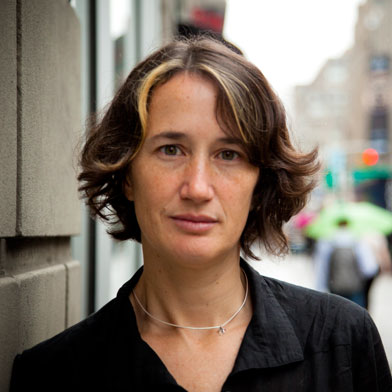Editor’s note: In her third and final dispatch from the recent Third Coast audio storytelling conference, radio producer Julia Barton examines a dilemma journalists in every medium face: how to create good narrative on deadline. In a session titled "Making News Stories Good Stories," producer Marianne McCune deconstructed her techniques for doing exactly that. Read Barton's earlier reports from the conference: Part 1 and Part 2. Also, Third Coast has just released its first set of audio recordings from the 2014 conference.
For all the buzz around longform and super-longform podcasts, the fact remains that most audio producers — at least in the United States — are still doing daily news work. They work fast and short, making stories that fit rigid network schedules like the ones at NPR (which just this week got even tighter, with more frequent newscasts: for some background see here.).
A reporter might despair that there’s no room for creative or human storytelling within this frame. Not necessarily, says longtime producer Marianne McCune. In two packed sessions at the Third Coast conference, McCune showed some of the ways she’s made quick-turnaround news pieces memorable and profound.

McCune started off playing a WNYC news feature of hers that’s won many awards: a dispatch from the apartment of an 87-year-old woman stranded in her apartment high in a housing project building after Superstorm Sandy inundated lower Manhattan in 2012.
Admittedly, this was a dramatic time in New York, and stories were literally washing up everywhere. But McCune’s work stays with us because of the little things: the smell of ham going bad in the woman’s fridge. A conversation (over McCune’s cell phone) with a friend who urges her to leave and get help. The woman insists she’ll be fine. “Oh, you are so hard-headed!” her friend exclaims.
McCune also has the presence of mind to narrate what she sees, using her microphone as a notebook. All these moments add up to what she calls “the in-betweens”—basically scene tape, moments that happen in field recording as opposed to scripted narration later recorded in the studio. Scene tape usually bobs up and then recedes quickly in news pieces, if it exists at all. But with forethought, the scene tape can actually serve as the structure of the story and carry much more of its expository weight. All of this results in a piece that avoids “boilerplate,” McCune said.
Most importantly, McCune said, good audio reporters just “linger” -- hanging around, tape rolling, as long as possible after they’ve “gotten” the story they came for. Deadlines are real, yes, but within that time constraint McCune thinks every reporter “should figure out maximum linger time you can do. Know yourself well enough.” Although she knew she had to rush over to WNYC and start filing her story, McCune still hung around as long as she could in the housing project building, recording as people struggled down the dark stairwells and then tried to figure out where to get provisions.
People stopped being “interviewed” and had conversations with one another. You get a glimpse into their real situation, rather than a performance for a microphone. “While you’re lingering, things happen, and more happens than the thing you came for,” McCune said.
When McCune gets back to the station from a reporting trip, she outlines the story quickly—where she’ll use tape, and where she’ll need exposition.
“It’s so rare you come back from a story not remembering the best moments you have,” she says. She does not transcribe her tape but plucks out the best parts based on the outline. This sounds minor, but it’s crucial: our memories and instincts really are the best filter for prioritizing quick-turnaround material, and getting into the weeds of a full interview can be deadly to the composition process.
Finally, McCune says, before finishing the story script, she follows up with sources if possible, even if only half a day has passed. Her Sandy story ends with the news that friends of the “hard-headed” elderly woman came to her apartment and moved her in with a relative in Queens. McCune calls this follow-up “turning one page” in the narrative.
“For some reason, it’s very satisfying,” she says. Satisfying because the update offers a modicum of resolution. That, combined with rich scene tape and evocative details, make stories by reporters like McCune linger in our minds, long after all the neighboring stories on the crowded NPR clock fade from memory.
Julia Barton is a longtime public media editor, working with “Life of the Law,” American Public Media, “99% Invisible,” and individual producers. She’s also been the managing editor of Radiotopia, a podcast collective from PRX. Barton’s reporting has appeared on “Radiolab,” “99% Invisible,” “Studio 360,” PRI’s “The World,” and other programs. She lives in Brooklyn in life, online at juliabarton.com.



